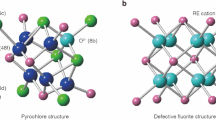This study presents some results on solving the problem of creating heat-protective elements for reusable aerospace vehicles, which includes developing materials with necessary physical and mechanical characteristics, approbation of design solutions and models of heat-protective structures, testing them under conditions simulating operational ones. Using the powder metallurgy technology, an innovative heat-resistant high-temperature alloy (Ni20Cr5.95Al)-Y2O3 was developed. According to the results of comprehensive microstructural and XRD analyses, the developed alloy had the required physical and mechanical characteristics and heat resistance in the operating temperature range of 20–1200°C, which made it applicable for manufacturing heat-protective structures of the orbital spacecraft windward part. A prototype of a three-layer heat-protective structure was designed and manufactured from the developed alloy, which consisted of four three-layer panels (165 × 165 mm in size) with an internal honeycomb filling, which edges were joined by U-shaped elements. The prototype design validation was carried out by constructing finite element models and analyzing their stress-strain state under maximum mechanical and thermal loads, which occurred during the launch and re-entry of the reusable spacecraft. Using a gas-dynamic test bench, the prototype was tested in a high-temperature gas flow under conditions simulating operational ones. In these tests, simulation of the external factors acting on the test element and the equivalence of material damage processes under simulated and operational conditions were provided. The test results obtained corroborated the underlying concepts used in the elaboration and design of the innovative heat-resistant alloy, as well as the stress-strain state assessment of a three-layer heat-protective structure.











Similar content being viewed by others
References
B. P. Bewlay, M. R. Jackson, P. R. Subramanian, and J.-C. Zhao, “A review of very-high-temperature Nb-silicide-based composites,” Metall. Mater. Trans. A, 34, No. 10, 2043–2052 (2003).
P. T. Kolomytsev, High-Temperature Protective Coatings for Nickel Alloys [in Russian], Metallurgiya, Moscow (1991).
G. S. Pisarenko (Ed.), Strength of Materials and Structural Elements under Extreme Conditions [in Russian], in 2 volumes, Naukova Dumka, Kiev (1980).
L. V. Kravchuk, K. P. Buiskikh, I. A. Gusarova, et al., “Methods for the simulation of the aerodynamic heating conditions of the structural elements of space shuttles,” Strength Mater., 50, No. 4, 565–574 (2018).
G. N. Tret’yachenko, Modeling in the Study of the Strength of Structures [in Russian], Naukova Dumka, Kiev (1979).
Author information
Authors and Affiliations
Corresponding author
Additional information
Translated from Problemy Prochnosti, No. 6, pp. 48 – 57, November – December, 2019.
Rights and permissions
About this article
Cite this article
Gusarova, I.A., Man’ko, T.A., Derevyanko, I.I. et al. Study on Metal Heat-Protective Structures of Reusable Aerospace Vehicles. Strength Mater 51, 852–859 (2019). https://doi.org/10.1007/s11223-020-00135-4
Received:
Published:
Issue Date:
DOI: https://doi.org/10.1007/s11223-020-00135-4




